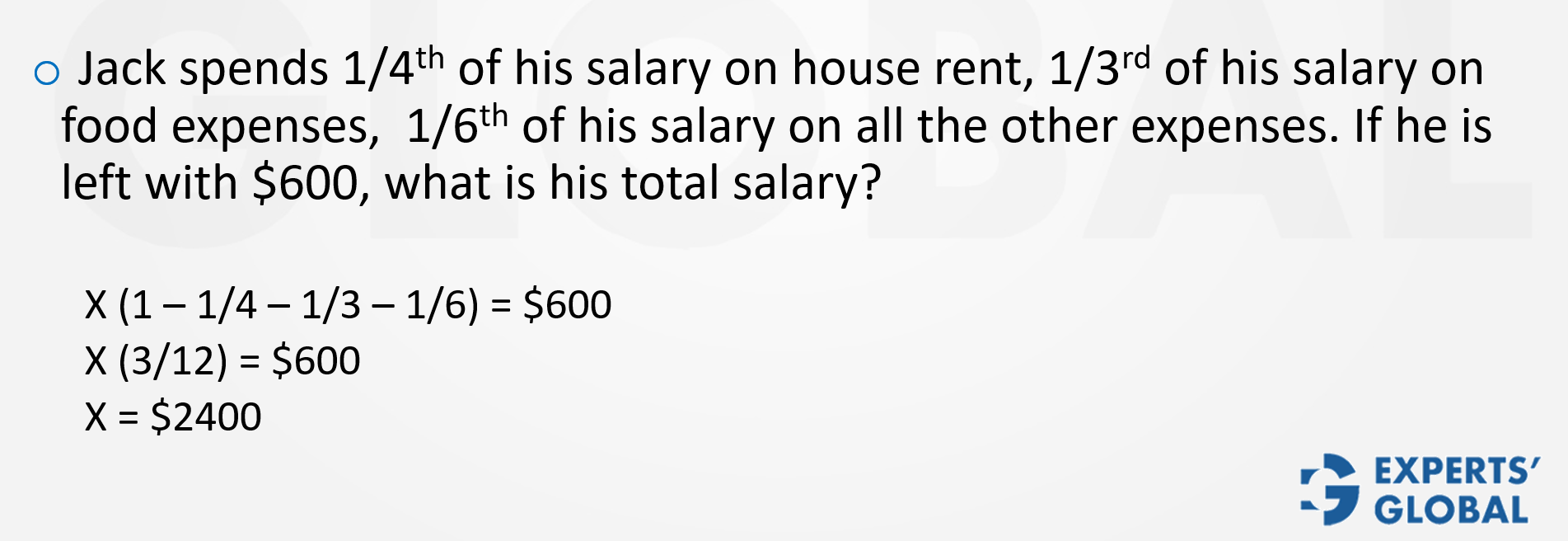Invest 30 seconds...
...for what may lead to a life altering association!
Help Line
- +91.8800.2828.00 (IND)
- 1030-1830 Hrs IST, Mon-Sat
- support@expertsglobal.com
...for what may lead to a life altering association!


On the GMAT, avoid introducing multiple variables when one is enough. Represent the total as a single variable and express parts as fractions of it. This simplifies equations, reduces errors, and saves time, especially in word problems involving ratios, percentages, or allocations.
In a rush for GMAT prep? Check our GMAT prep crash course!
One of the most valuable time-saving strategies on the GMAT is learning when to reduce the number of variables in a problem. Many students instinctively introduce multiple unknowns in simple equations, which only makes the process longer and more error-prone. A cleaner and faster approach is to represent everything in terms of a single variable, wherever possible. This method not only simplifies calculations but also minimizes confusion while keeping the solution structured. For example, when solving problems involving salaries, investments, or proportions, you can treat the total amount as one variable and then express the remaining parts as fractions of that total. This approach ensures that the problem reduces to a straightforward equation, often solvable in a single step. Mastering this habit can save you precious time in your GMAT prep as well as the actual exam.

In many GMAT problems, students make the mistake of creating multiple variables where one is sufficient. By using a single variable to represent the total value, and then expressing other parts of the problem as fractions of this total, you can save both time and effort.
Worked Example
Consider this problem:

Jack’s total salary is divided into different parts. One-fourth of it goes into one expense, one-third into another, and one-sixth into yet another. After these allocations, Jack is left with $600.
Instead of taking separate variables for each part, let the total salary be X.
This leaves:
X – (¼X + ⅓X + ⅙X) = 600
Simplifying the fractions,
X – (¾X) = 600
¼X = 600
X = 2400
So, Jack’s total salary is $2400.
Representing everything in terms of a single variable avoids unnecessary complexity and leads to quicker, cleaner solutions. This method is particularly effective in word problems involving fractions, percentages, or proportional distributions. For deeper practice with this approach, explore our 15 GMAT mocks, where conceptual clarity is emphasized alongside speed and accuracy.
Reducing a problem to one variable is not just a technique; it is a mindset. Clarity beats clutter. In GMAT preparation, define one objective for each study block, let every exercise serve that purpose, and measure progress against it. In MBA application prep, anchor your story on one central theme, then let experiences, achievements, and recommendations express its parts. In life, choose a north star, express actions as fractions of that whole, and remove noise that adds variables without value. When the equation of your day has fewer unknowns, the solution appears faster. Simplicity is not small; it is power. Always.